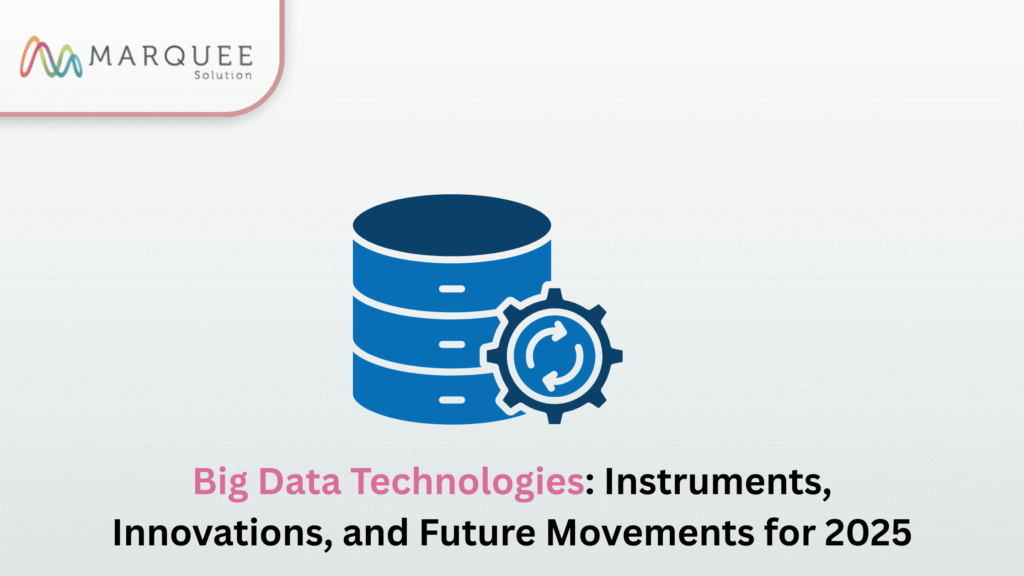In an epoch where digital footprints swell with every nanosecond, big data technologies stand as the backbone of intelligent enterprises. The deluge of information from countless channels has outpaced the capabilities of conventional tools. Herein lies the eminence of these avant-garde technologies crafted to orchestrate, store, and decipher intricate data realms with unmatched precision. For any professional seeking to fortify or accelerate their career trajectory within this domain, vigilance toward emergent tools and trends is no longer optional; it is imperative.
What Constitutes Big Data Technology?
Big data technology encompasses the ecosystem of frameworks and instruments engineered to manage colossal, multifaceted datasets, an alchemy of storage, computation, and analytics.As articulated by Gartner, big data epitomizes “high-volume, high-velocity, and high-variety information assets demanding cost-efficient, innovative processing for profound insight and decision augmentation.”- Volume: The magnitude of data proliferation is beyond precedent. With each heartbeat, torrents of information flow from social platforms, IoT sensors, and financial systems. This astronomical expansion necessitates scalable storage architectures fortified with immense computational vigor.
- Variety: Data manifests in multifarious guises—structured, unstructured, and semi-structured. Structured data lives within organized tables; unstructured data thrives in freeform chaos like images, videos, and social chatter. Semi-structured formats such as JSON or XML fall in between. Each demands bespoke analytical paradigms for revelation.
- Velocity: The tempo at which data materializes is staggering. From instantaneous IoT streams to social media dynamics, organizations must now wield the capability to ingest, process, and respond in real time.
- Veracity: Data’s authenticity determines its value. Inaccuracy breeds costly misjudgments. Hence, equilibrium between purity and practicality is paramount; data must be reliable yet swiftly actionable.
Categories of Big Data Technologies
1. Data Storage
Apache Hadoop This open-source behemoth distributes data across clusters, amplifying storage scalability from solitary servers to thousands. Hadoop’s economic efficiency renders it an invaluable ally for enterprises burdened with gargantuan datasets.- HDFS (Hadoop Distributed File System): Deconstructs data into fragments dispersed among servers, ensuring durability even amid hardware failure.
- MapReduce: A parallel-processing paradigm that decomposes complex computations into smaller executable nodes, expediting outcomes.
2. Data Mining
RapidMiner A versatile open-source suite from Altair, RapidMiner bridges analytics, AI, and automation, empowering professionals to design predictive frameworks and prototypes swiftly. It supports integration with TensorFlow, H2O, and Weka, cultivating an environment of experimental agility for data scientists and executives alike.Presto Presto heralds itself as a “fast and reliable SQL query engine for the open lakehouse.” Its single ANSI SQL interface enables simultaneous querying across disparate data sources, ideal for instantaneous analytics without transformation overhead.3. Data Analytics
Apache Spark Renowned for real-time analytical processing, Spark’s in-memory computations empower machine learning and iterative data exploration. Its universal API compatibility with Python, Java, and Scala enhances cross-functional collaboration, ensuring its dominance in the analytics realm.Splunk Splunk transmutes machine-generated chaos into structured intelligence. Its prowess in anomaly detection, reporting, and live dashboarding positions it as an enterprise essential. Splunk’s artistry lies in unveiling operational truths concealed within log streams, events, and digital exhaust.4. Data Visualization
Tableau Tableau revolutionizes visual storytelling. Its fluid interface translates numbers into narratives, empowering both executives and analysts to unravel hidden patterns. The platform’s seamless integration with diverse data origins accentuates its status as the cornerstone of business intelligence.Power BI Microsoft’s Power BI fuses cloud collaboration with deep analytical visualization. By merging multiple data ecosystems into immersive, interactive dashboards, Power BI fosters real-time decision orchestration across teams. Its innate harmony with other Microsoft ecosystems makes it a corporate mainstay.Applications of Big Data Technologies
HealthcareFrom predictive diagnostics to genomic revelations, big data serves as the new stethoscope of modern medicine. Predictive analytics fuse patient histories, genetic signatures, and lifestyle indicators to forecast disease trajectories. Simultaneously, wearables deliver continuous vitals, facilitating preemptive care and reducing hospital readmissions.FinanceIn financial corridors, data operates as both compass and shield. Algorithms in quantitative trading decode market volatility; fraud detection mechanisms identify anomalies before they metastasize. Moreover, customer analytics powered by unsupervised learning personalizes investments, while automation streamlines operations and optimizes capital flow.RetailRetailers leverage analytics to choreograph inventory and enhance customer intimacy. Supply chains breathe through a data-driven rhythm, minimizing waste and amplifying efficiency. Location analytics sculpt decisions on store placement and strategy, while behavioral insights drive bespoke product recommendations and loyalty reinforcement.Emerging Movements in Big Data
Edge Computing Defined by IBM as computing proximity to data origin, edge architectures propel analysis closer to IoT sensors, mitigating latency. By processing data locally, businesses experience sharper insights and reduced bandwidth strain, a necessity in real-time applications.AI Integration Artificial intelligence now coalesces with big data, forming a digital symbiosis. Machine learning augments predictive prowess, anomaly detection, and automation from predictive maintenance in manufacturing to real-time fraud interdiction in finance.Hybrid Cloud Environments Hybrid clouds interlace on-premise fortitude with the scalability of public infrastructures. Sensitive data remains ensconced within secured perimeters, while flexible computational demands flourish in the cloud. This architecture epitomizes equilibrium between privacy, performance, and cost.Challenges in Adopting Big Data
Even as the allure of big data gleams, its integration is riddled with trials:- Data Integration: Ensuring consistency across diverse sources, structured, semi-structured, or otherwise, remains intricate.
- Scalability: Infrastructure must evolve in tandem with data magnitude, without sacrificing performance.
- Security & Compliance: Safeguarding sensitive data within frameworks governed by GDPR, CCPA, and similar mandates.
- Investment: Big data ecosystems demand substantial capital in both human intellect and technology.
- Data Governance: Ensuring reliability, integrity, and regulatory harmony remains an ongoing odyssey.



